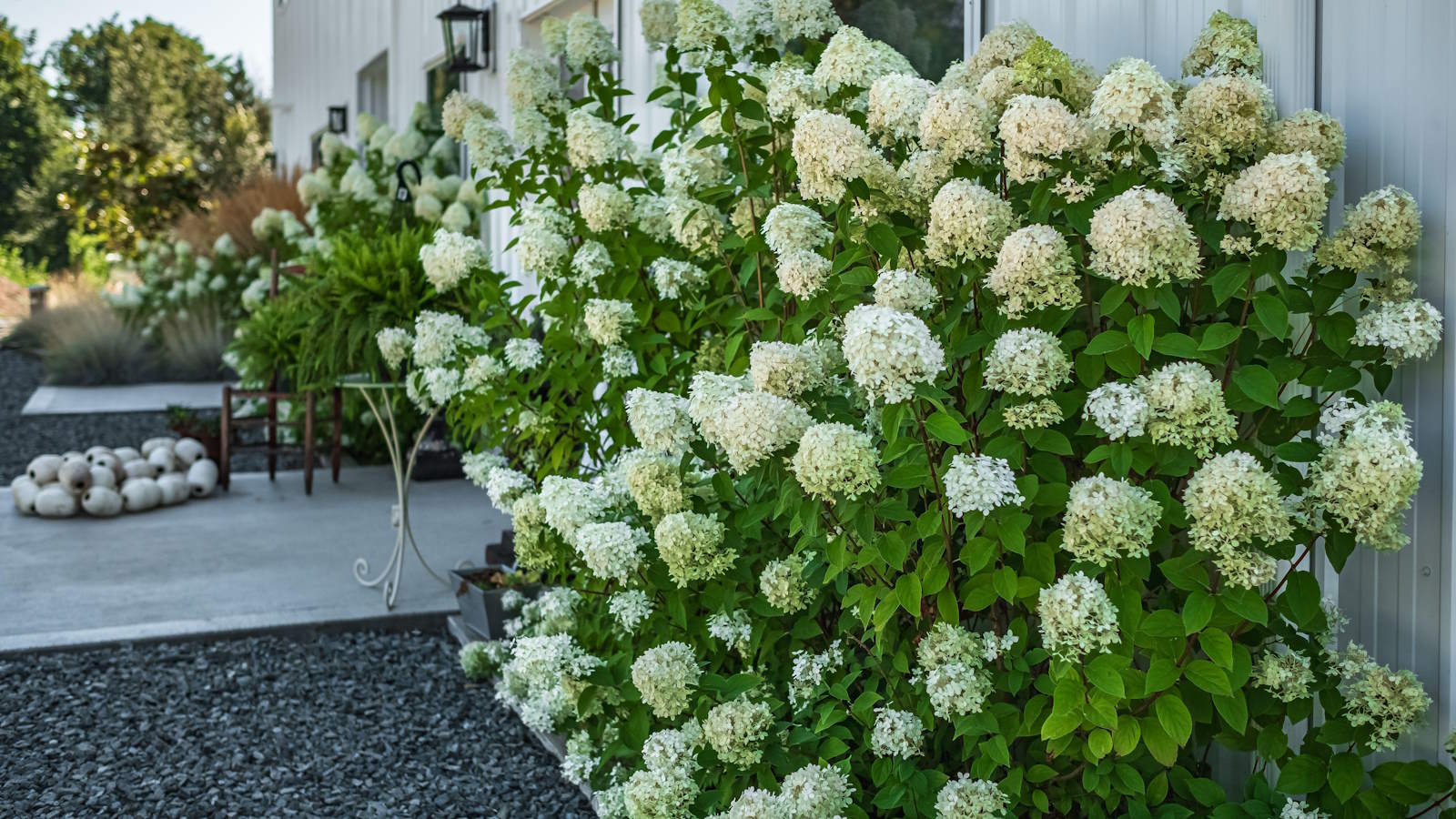
Have you been ignoring the darker borders and corners of the garden? There is no need - there is a huge choice of shrubs out there that thrive in full or partial shade, and with a little bit of considered planting, you can add color and interest to those areas that had been relegated to storage.
Working with shifting levels of light and shade is something that every gardener needs to learn and understand. Aside from shrubs, there are a wide variety of shade plants that can offer changeable interest throughout the year, keeping your landscape vibrant whatever the season.
Instead of seeing shady backyards as a challenge, discover the potential you have to create wonderful contrasts as part of your backyard ideas. White or pale flowers, and golden or silvered variegated leaves juxtaposed with darker foliage and shade create the effect of light among the shadows, one of the dramatic planting possibilities for white garden ideas.

How to choose the right shrubs for shade
The deciduous or evergreen shrubs you choose for shady spots will differ depending on the type of shade you have in your backyard – so study the light patterns at different times of day and through the seasons. Smaller spaces might be in shade throughout the day; other backyards might only be in shade for part of the day, so the shrubs might have to be sun-tolerant, too.
Decide whether areas are in light, semi, dappled or deep shade. For woodland areas, there are many woodland plants that are suited to the specific conditions under trees. You can also check your US hardiness zone, to make sure the shrubs you want will survive and grow well in your local climate. And don't forget to assess the soil - compare the soil requirements of your chosen shrubs to what you have in your yard to ensure they will be happy.
‘Some shade-loving shrubs, such as the evergreen silk tassel bush, Garrya elliptica, don’t like to be in deep shade, whereas others like Fatsia japonica can cope with full shade,’ explains award-winning garden designer Jonathan Snow.
Below, we bring you the best shrubs for shade and explain the ideal places to plant them.
1. Best shrubs for shade for small gardens

With a wide range of species, both deciduous and evergreen, which flower at different times, daphne odora offers lots of variety and the blooms have a powerful fragrance.
They grow well in partial shade and are not large shrubs so are also well suited to shady spots in small gardens.
There are many varieties of daphne that flower in winter, adding much needed color as a winter garden idea, while others flower in spring or summer.
Size: up to 4ft in height
Good for: A shaded border, to line a tree-covered pathway, or as one of the best plants for under trees
Hardiness zones: 4-9
2. Best shrubs for shade for winter interest

Witch hazel, or hamamelis, is a tall flowering shrub that will add some welcome color to your backyard in winter in areas of partial shade.
A early bloomer, the fragrant flowers on this shrub for shade appear from December through to early spring depending on the hardiness zone where you live. It has distinctive spider-like flowers in shades of yellow, red and orange.
Witch hazel needs to be pruned regularly to keep it in check otherwise it can grow a little unruly. For the most economic option, plant them bare root in fall.
Size: 15-20ft in height
Good for: Brightening a dark corner of your yard in winter
Hardiness zones: 3-8
You can buy witch hazel shrubs at Nature Hills.
3. Best shrub for shade for hedging

Great to plant in a shady spot for a privacy hedge, yew, or Taxus baccata, is an enduringly popular choice and it is easy to see why. It will grow happily in many locations – from full shade to full sun – is a dense and quick grower, and can live for many years.
This shrub for shade works brilliantly as a backdrop to white flowers in a shady corner, and can be clipped into beautiful shapes and lines.
Size: 8-12ft in height
Good for: Creating a hedge for a shady spot
Hardiness zones: 4-7
Several varieties of yew are available at Fast Growing Trees.
4. Best shrubs for shade for late summer blooms
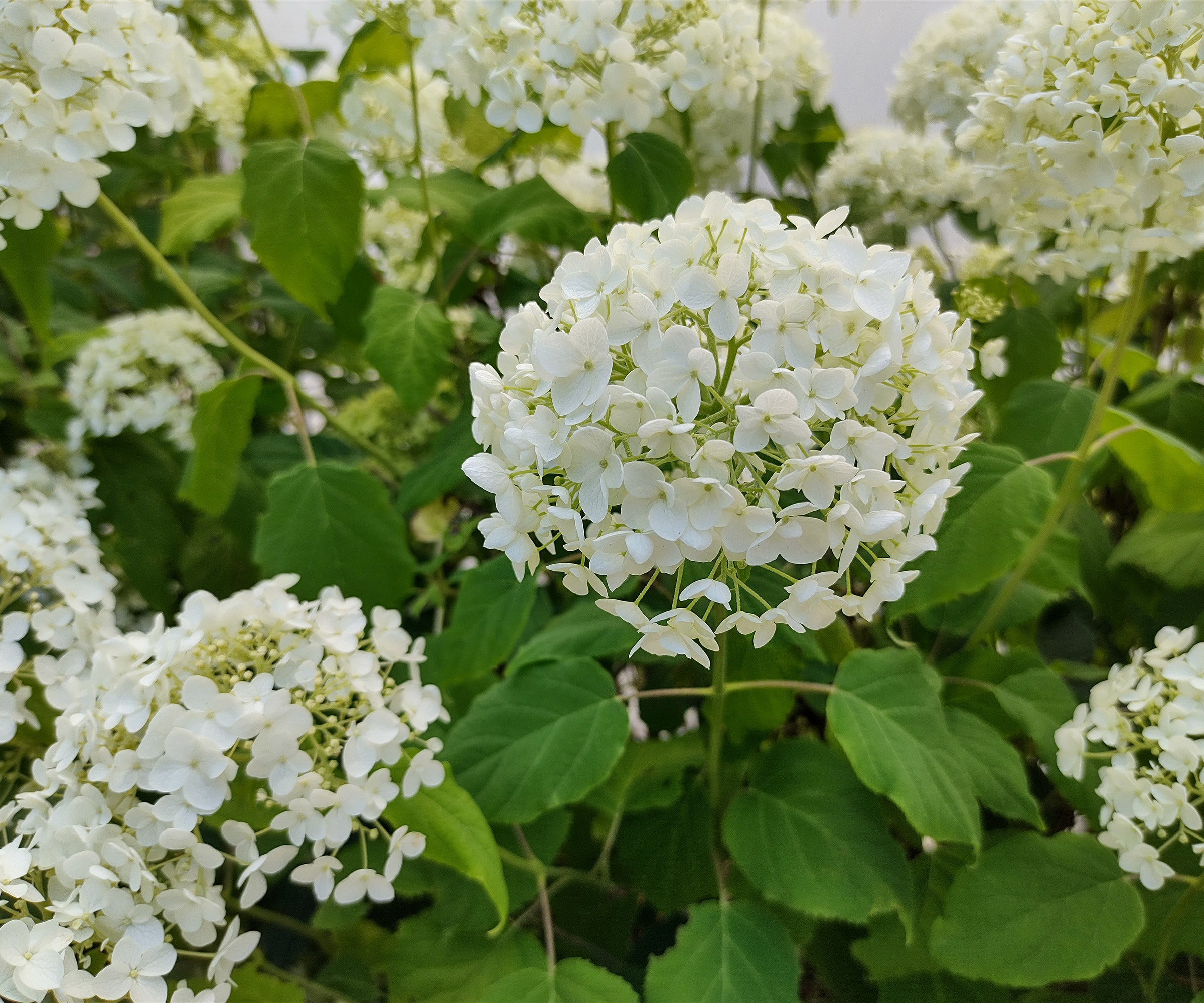
Hydrangeas are well known and loved, and there are many varieties to choose from that will cope well in a shady position. They are also one of the best flowering shrubs.
'Hydrangea aspera ‘Villosa Group’ is my favorite hydrangea with its large pointed velvet leaves and late summer blue flowers. It can also be grown on chalk,’ explains Jonathan Snow.
The deciduous shrub does well in partial shade, but it's a good idea to learn how to prune hydrangeas to keep them flowering well and stop them becoming scruffy and unkempt.
Size: up to 6ft wide
Good for: adding color and soft textures to a larger shaded area
Hardiness zones: 5-9
There are a large variety of hydrangea shrubs at Perfect Plants Nursery.
5. Best shrubs for shade with fragrant flowers
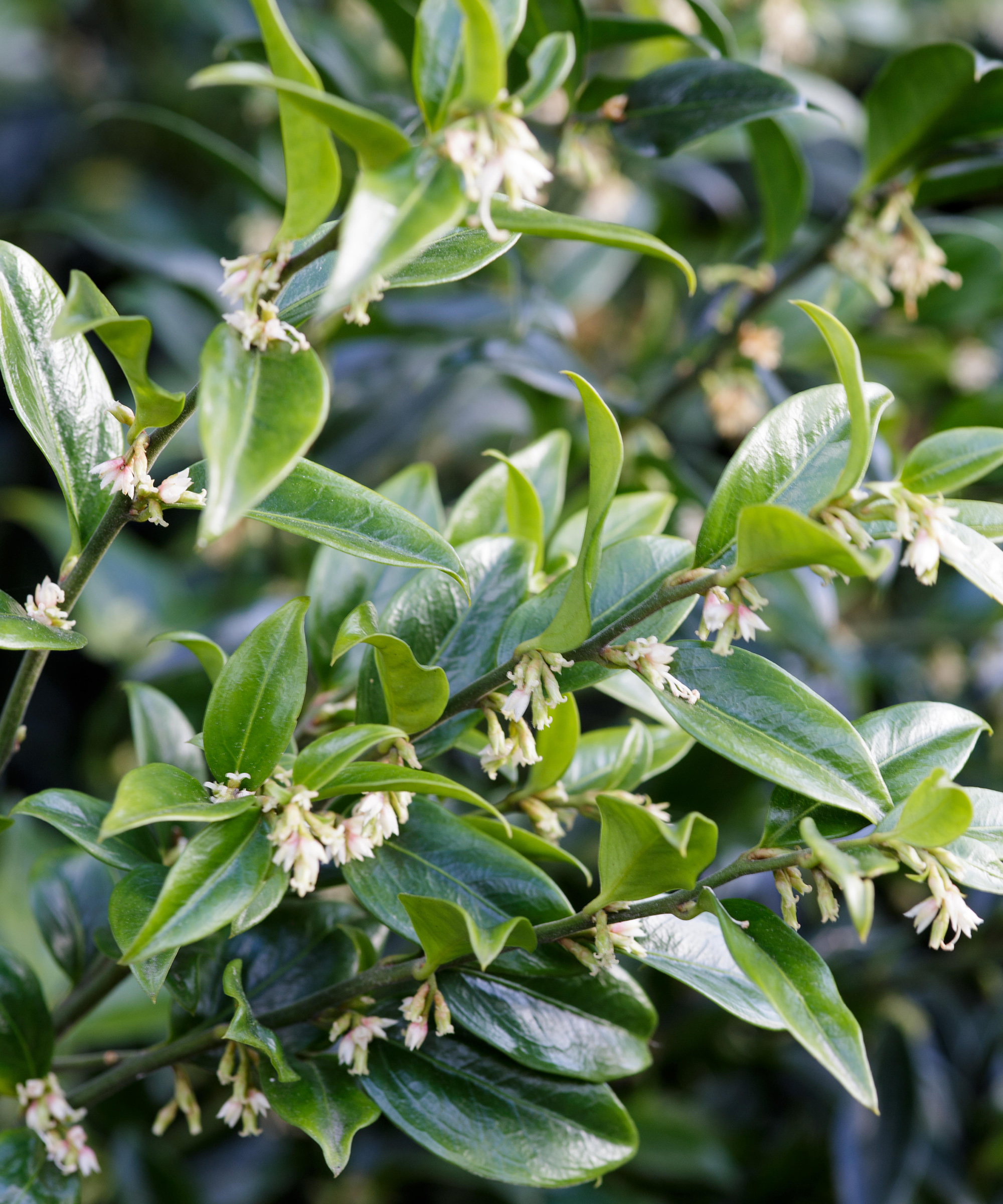
Shade loving plants often have the most fragrant blooms, as if the plants are trying to compensate for their lack of sunshine and color, so are ideal for sensory garden ideas.
Sarcococca hookeriana ‘winter gem’, also known as sweet box, has attractive, evergreen glossy leaves and highly fragrant white late winter flowers and berries. The dwarf shrub will tolerate full shade and brighten up dull corners where little else will grow.
Size: 2-3 ft
Good for: Gardens that experience drought
Hardiness zones: 6-9
You can find Sarcococca hookeriana at Nature Hills.
6. Best shrub for shade with bright flowers

Mahonia repens is a frost hardy dwarf evergreen shrub that tolerates full to part shade.
It’s main attraction, though, is its dark yellow racemes of upright flowers in mid to late spring, followed by blue-black berries. Shrubs with lighter color flowers can really brighten up a shady area, especially white and yellow flowers.
Fully frost hardy, these low growing mahonias, which typically only grow to one or two feet in height, can be used for ground cover.
Size: 3-4 ft in height and spread
Good for: Vibrant color in the darker months, and textural interest
Hardiness zones: 7-9
7. Best low maintenance shrub for shade
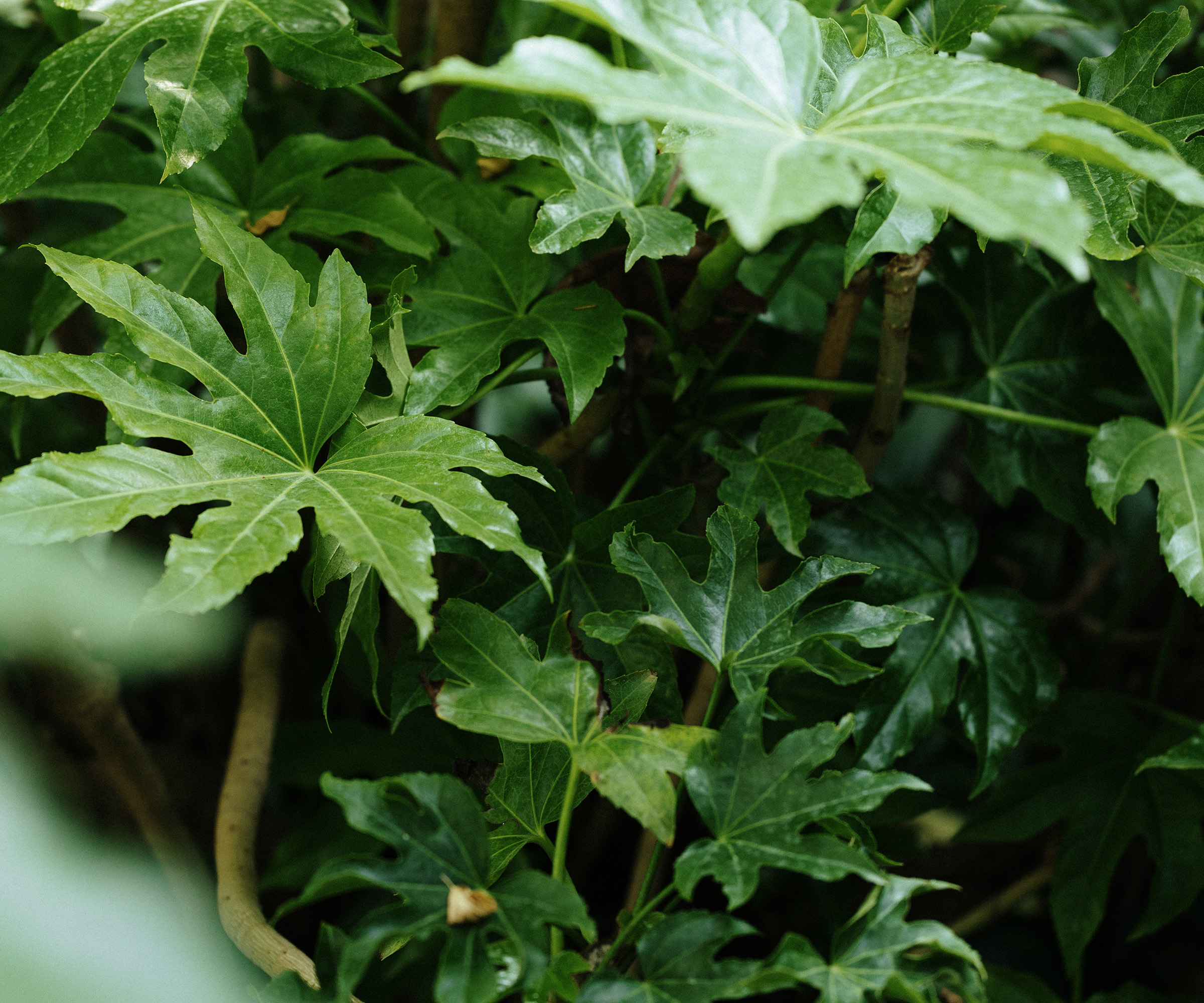
'Fatsia japonica can cope with full shade as well as a bit of sun, and a fair amount of general neglect, too,' explains Jonathan, so it is a good choice if you're looking for low maintenance shrubs or fast growing shrubs for shade.
'It has architectural, evergreen leaves, and striking panicles of spherical, creamy white flowers in fall, which are often followed by round, black fruit in winter,’ adds Jonathan.
Both the flowers and berries are a valuable food source for beneficial insects, especially as they are produced in the middle of winter when not much else is on offer, so are also great for adding to planting plans for wildlife garden ideas.
Size: 5-8 ft in height
Good for: Creating a focal point with its striking leaves
Hardiness zones: 8-11
8. Best shrubs for shade with variegated leaves

Aucuba japonica ‘crotonifolia’, also known as Japanese or spotted laurel, can grow in partial or full shade. The rounded shrub has spotted, variegated leaves and produces bright red berries in fall. They like moist, well-drained soil.
Partial shade is best for more pronounced variegation of this pretty evergreen plant, which can provide a lovely backdrop in a shady corner of a backyard.
Aucubas may not be the most standout plants, but they make a very effective and dense windbreak and can tolerate high, salt-laden winds, so are a good option for exposed and coastal gardens, and would also make a great plant for a shaded balcony.
Size: up to 15 ft tall
Good for: Coastal gardens
Hardiness zones: 8-11, but down to zone 4 if grown in a container
9. Best long living shrubs for shade

For some classic, traditional blooms, you can't get much better than long lasting and low maintenance camellias as shrubs for shade – which we think are among the best shrubs for the front of the house.
'One of my favorites is Camellia sasanqua. I find this fall flowering camellia so much more delicate, in leaf and flower, than its blousy spring cousins,’ says Jonathan Snow.
If you are growing camellias they prefer moist, rich, acidic soil and thrive in full to partial shade. To maximize their flowering potential, learn how to prune camellias and you will be rewarded with their beautiful blooms for many years.
Size: 6-10 ft in height
Good for: Making a dense, informal screen
Hardiness zones: 7-9
You can find different varieties of mature camellia shrubs at Nature Hills.
10. Best easy to grow shrub for shade

The silk tassel bush or Garrya elliptica is known for its showy cascading flowers or catkins in winter or early spring.
A native to the coastal ranges in California and Oregon, this easy to grow evergreen shrub will grow in most soil types, but prefers to be out of the wind, and not in deep shade.
It makes a striking backdrop to many other plants and grows well in partial shade.
Size: 10-12 ft
Good for: Creating a privacy screen
Hardiness zones: 7-9
11. Best large shrubs for shade
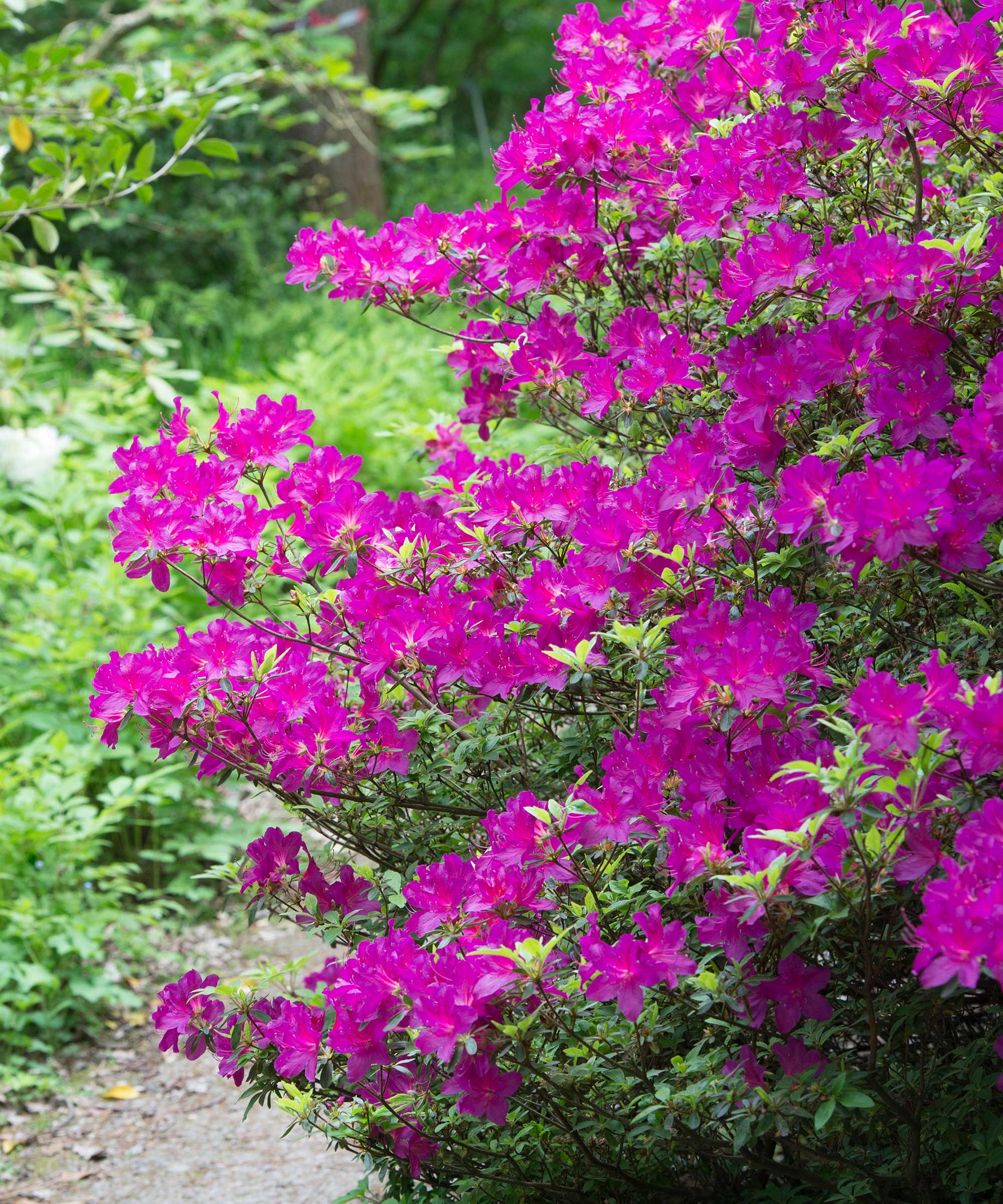
Woodland plants, rhododendrons grow well in dappled shade. These large growing evergreens flower from spring through to summer filling shady spots in the garden with colors ranging from deep red through to white.
It is easy to learn how to grow rhododendrons. Rhododendron ‘Cunninghams White’, is a reliable, free flowering rhododendron with mauve buds that open to white flowers with a pale yellow center in spring. It can tolerate a wide range of soil conditions, unlike most rhododendrons that prefer acidic soil.
Pruning rhododendrons will keep them well shaped and blooming well.
Size: 3-5 ft
Good for: Floriferous color in spring
Hardiness zones: 4-8
You can find a huge range of rhododendrons at Nature Hills.
12. Best shrub for shade with changing leaf color

A great choice for privacy and screening in a backyard, photinia grows well in partial shade and is a fast-growing, low maintenance shrub.
Some varieties have lovely changing foliage color in spring and fall, such as Photinia x fraseri 'Red Robin', which produces bright red new leaves.
They tolerate most soil types, although will cope best with moist, fertile soil with plenty of organic matter added in.
Size: 12-15 ft in height
Good for: Pollinators in spring, and creating a privacy hedge
Hardiness zones: 7-9
13. Best climbing shrubs for shade

If you are looking to cover walls or other vertical structures in a shady corner then Euonymus fortunei is an excellent choice and a good courtyard garden idea for making the most of space available by growing vertically.
Some varieties of these evergreen climbers also have lovely variegated leaves, to bring light and golden accents into a dark space, such as ‘Emerald n Gold’ with its golden variegated leaves. It copes well in dappled and partial shade.
Size: 1-2 feet
Good for: Decorative foliage
Hardiness zones: 5-10
FAQs
What evergreen is best for shade?
There are many evergreens that are best for shade. These range from Aucuba japonica and some camellias, to common laurel and English yew, to name but a few. The key is to always do your research before buying a shrub for shade and check that the specific plant is a full shade loving shrub.
Do hydrangeas like sun or shade?
Hydrangeas do tolerate some shade, but to flourish they should also enjoy a bit of – ideally morning – sun. They will not do well in full shade, however, so get to grips with how to grow them and what to plant with hydrangeas so that you get the best from these stunning shrubs for shade.
Can azaleas grow in shade?
If you are growing azaleas, they will cope well with dappled shade, such as along a woodland border, but will struggle in full shade. Evergreen varieties in particular prefer a shady spot as full sun can scorch their flowers.
With a little research, there will be a shrub suited to a shaded part of your garden, that can usually serve a useful purpose. You can even find shade plants that attract pollinators and wildlife into your yard, such as these glorious shade plants that attract hummingbirds.







